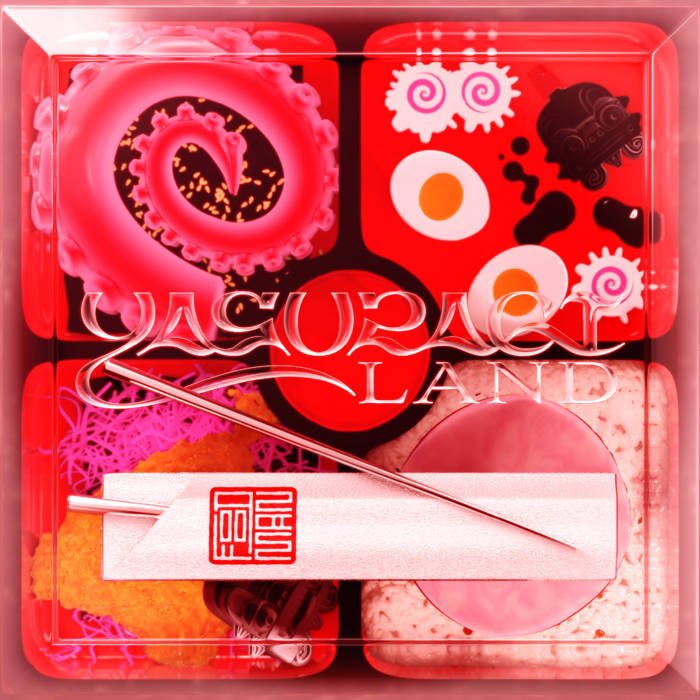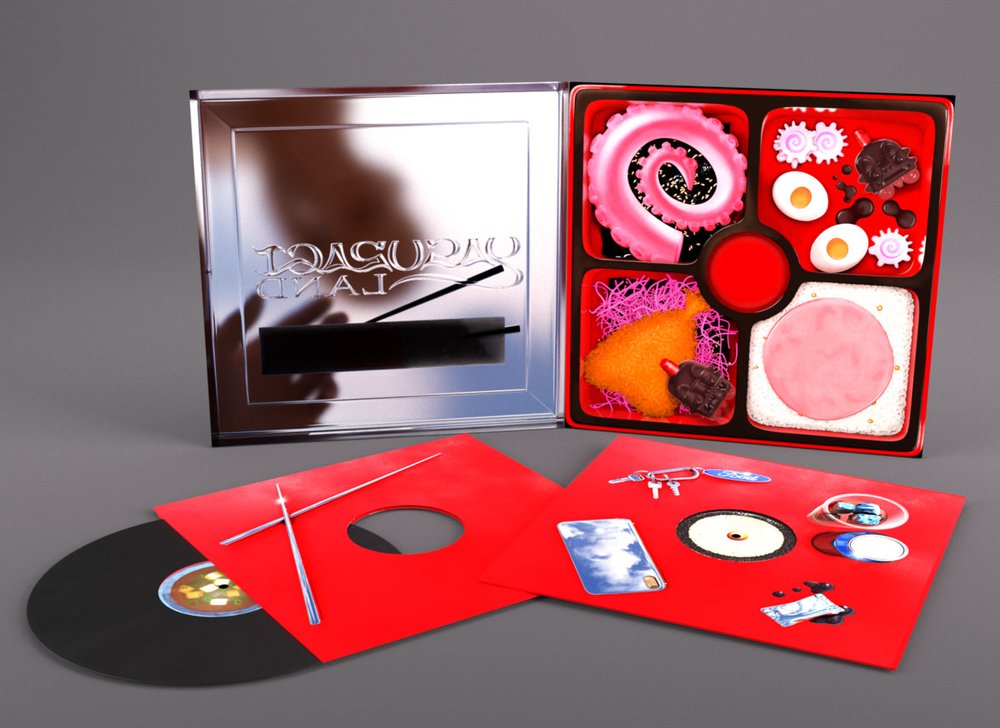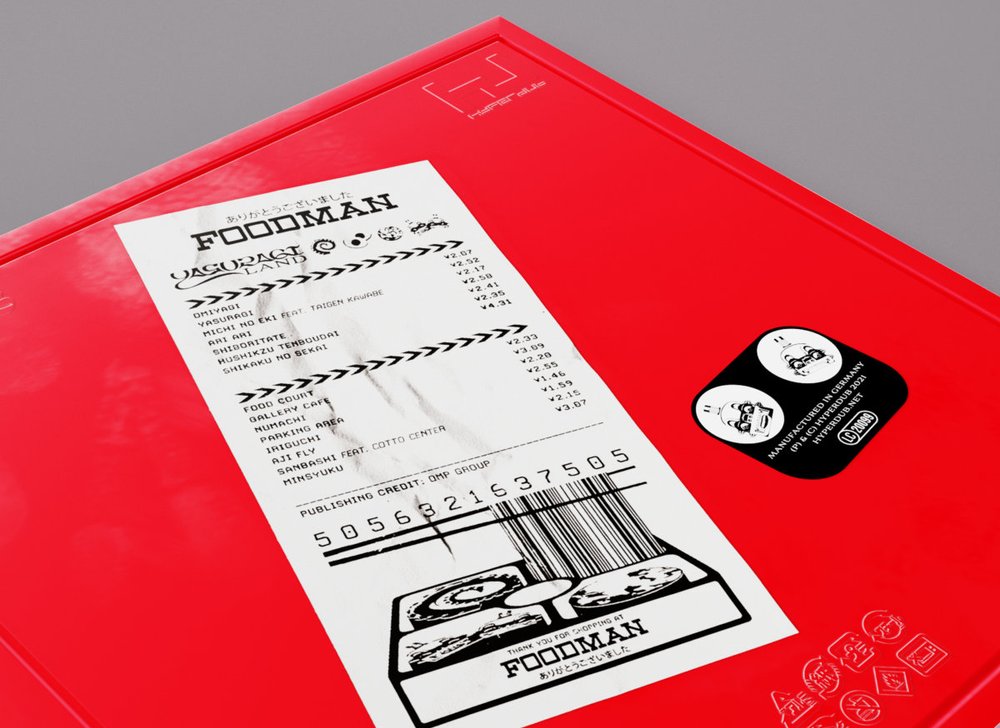Hyperreal Sushi

PlusMinus Studio is a creative consultancy and graphic playground run by Armel Bellec and Tomas Clarkson. Year 1 Coordinator Craig Burston describes how, as GMD graduates, they returned to talk to us over lockdown about their studio ethos, approaches to technology and the weird world of digital reality, focusing on their work for and with musician Foodman for his new album, Yasuragi Land.
Armel and Tomas met whilst studying on separate Foundation courses at UAL (CSM and LCC respectively) both deciding to join GMD for their undergraduate studies due to LCC’s print based workshops and also for GMD’s commitment to typography, and its expansive approach to the subject.
After their second year, they spent a year together on the Diploma in Professional Studies. Determined to continue this relationship, they spent their final year travelling between London and Berlin on academic and freelance projects, resulting in them producing a collaborative Major Project and then after graduation, settled on Berlin as their base.
But back to Foodman and images of hyperreal sushi… ‘the vagaries of the initial brief’ allowed them to stretch their digital and typographic skills and conceptual methods even further. With Foodman not speaking English and PlusMinus not speaking Japanese, it meant that the initial process began by sharing visual reference points (with a little bit of online translation) to push the project forward.
Their design and concept development for Foodman works incredibly well. The vinyl release looks like a hyperreal oversized bento, too tasty to be true. At CD size, the reduced scale doesn’t diminish the visual impact and as a digital avatar, it’s, well, just as tasty.
The final artwork is the result of countless hours, long days and nights, using machine learning to ‘teach’ the computer to “learn over time what sushi looks like.” Machine learning time was one thing, but then rendering time, was even greater.
Tomas: “We scraped the web for something like 10,000 images of sushi, but also tested the viability, throwing in random images of motor cars to see if the machine could spot the difference”.
Armel: “The more images we fed into the machine, the more fictional representations of Sushi were spat out.”
Also influenced by their fascination with hyper detailed airbrush designs of the 70s and 80s, they utilised Photoshop tools to replicate the process, and the final artwork was the result of over 300 layers of detail. It takes commitment to a whole new level when you’re experimenting with drop shadows on individual grains of rice in the early hours of the morning, taking shifts between sleeping and working to push the project forward, making up time in between other projects and clients.
Working with such a distinct aesthetic, and culturally nuanced concept, Tomas explained that guesswork was “a hard no” ensuring there was no ‘othering’ of Japanese culture of any kind. The result of this strict working method with Foodman himself and the record label, has resulted in one of the most dynamic and weirdly un-real graphic representations of things (food) that we think we know, but maybe not as well as we think we do. The music is equally as disorienting in its use of sounds and rhythms that sound simultaneously familiar and alien.
Yasuragi Land by Foodman is out now on Hyperdub Records.
https://foodman.bandcamp.com/album/yasuragi-land
PlusMinus can be found here: https://www.plusminus.studio


